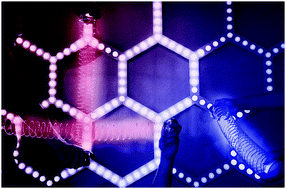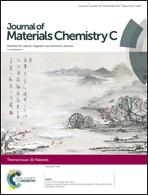Optical properties and Raman-active phonon modes of two-dimensional honeycomb Zintl phases†
Abstract
Intermetallic Zintl phases whose structures consist of honeycomb layers of main group elements often serve as useful precursors for two-dimensional group 14 graphane derivatives. Here, we probe how the Raman spectra and band gaps evolve in these precursor intermetallic phases before they transform into their van der Waals counterparts. Through polarization-dependent Raman experiments on seven different group 14 and 15 Zintl phases with different stacking motifs, we show that the in-plane and out-of-plane Raman frequencies mostly depend on the reduced mass and the in-plane bond lengths of the elements constituting the honeycomb framework. From optical absorption measurements, we show that the honeycomb framework comprised of single elements is metallic, but when the framework is comprised of alternating elements in a BN-like fashion, such as in NaSnP, KSnAs and KSnSb, a band gap is opened up ranging from 0.54 eV for KSnSb to 0.95 eV for NaSnP. This study allows for the determination of the structure and stacking motifs for this emerging class of 2D layered metallic and semiconducting materials.

- This article is part of the themed collection: 2D Materials


 Please wait while we load your content...
Please wait while we load your content...